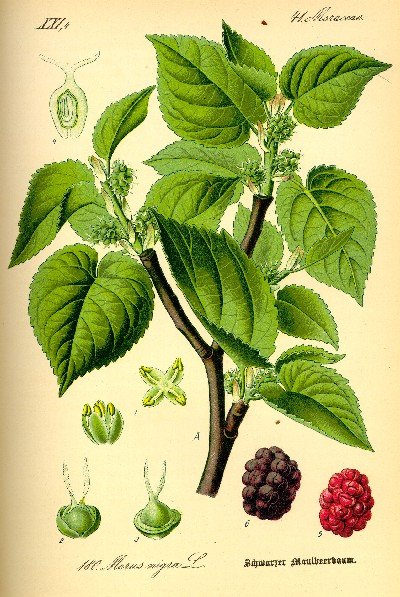The mulberry
The mulberry
Family: Moraceae
Mulberry, from central
According to someone, the
title Il Moro conferred to the Lord of Milan, would come from
The prestige of the
mullberry is indeed linked to its use in the colture of the silkworm, activity that
till the first half of XX Century has represented a great source of income for
many peasants' families of our territory. At the beginning of 1700, the leaves
of this tree – the only food for worns – were contended and were centre of
fiscal verifications, as theAustrian authority organized also a cadastral
certificate that verified their presence – only in Parabiago – with 6,417
mulberries. So, on view of the great economic meaning of the mulberry, were
expected strict fines for those who stole the leaves or damaged the mulberry.
…Today
In the past mulberries were the main riches of
the Po Valley – included milano high and dry valley - and strongly
characterized the landscape, covering the fields with endless rows.
The colture and the use of silkworns finished
around 30s because of the introduction of first artificial fibres, today even
the mulberry is almost disappeared from our fields (as also disappeared the
rows for the division of the fields, obstacle for agrarian machines' work):
some samples are still visible in Parabiago near Dio'l Sa church.





